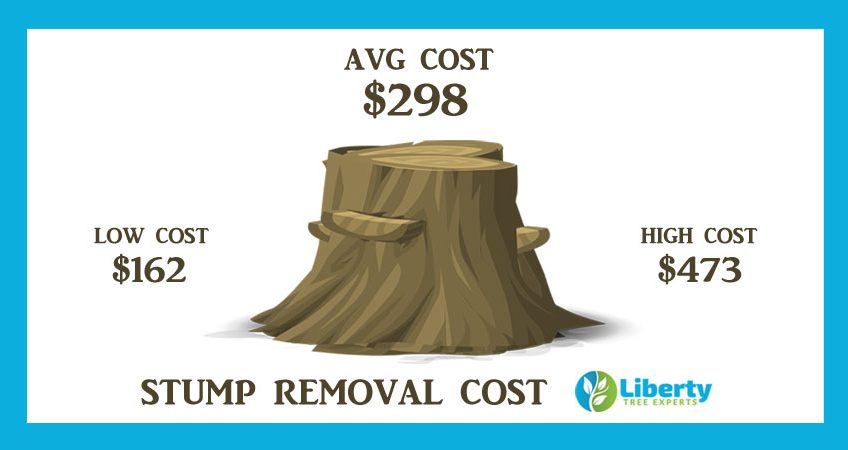Featured
Table of Contents
- – Avra Valley, AZ Arborist Pricing Guide
- – What To Expect To Pay For A Tree Trimming In A...
- – Next-Day Tree Removal Service Costs In Avra V...
- – Avra Valley, AZ Stump Removal Cost Insights
- – Avra Valley, AZ Stump Removal Review: Pricing
- – Complete Guide To Stump Grinding Costs In Avr...
- – Avra Valley, AZ Tree Service Rates: What To K...
- – Comparing Avra Valley, AZ Arborist Companies...
- – Decoding Tree Service Estimates In Avra Vall...
- – Save On On An Tree Trimming In Avra Valley, AZ
- – Why Are Avra Valley, AZ Tree Clearing Worth ...
- – Veteran Discounts On Stump Grinding In Avra ...
- – Tree Clearing Cost Comparison In Avra Valley...
- – Annual Stump Removal Costs In Avra Valley, AZ
- – How Much Does It Cost To Get An Tree Trimmin...

The subsections listed below supply more comprehensive info about prices, including an average range for each. TypeAverage Removal CostPineConiferPalmMagnoliaArborvitaeAshCedarSweet GumEucalyptusSycamoreCypressOakMaplePoplar You can anticipate to pay between to remove a pine, depending on its size. Removing a pine is among the more affordable jobs unless it is one that has been around for many years and is rather big.
Avra Valley, AZ Arborist Pricing Guide
Pines likewise have a tap root that grows deep into the soil, which can show to be more challenging to get rid of. The process itself involves a specialist cutting the tree, clearing the base, cutting the surface roots, removing the stump, and finally treating the soil. Without a professional hand, you run the risk of leaving pine seedlings behind, which will fall from the roots of distressed pines.
What To Expect To Pay For A Tree Trimming In Avra Valley, AZ
The U.S. nationwide average for conifer removal is around to have the conifer reduced, transported away, and the stump ground or removed completely. Conifers are normally simpler to eliminate, and even though they can grow rather high, they do not cost a fortune to eliminate. Conifers consist of pine, spruce, fir, and juniper trees.
Next-Day Tree Removal Service Costs In Avra Valley, AZ
While conifers are lovely, they kill native plants and specific kinds of yard. This is due to the fact that they require a great deal of water and nutrients to survive, so they leach it off surrounding plants. They also have an extensive network of roots, which can impact your home's foundation. The typical cost of palm removal depends upon the height as much as the type, ranging from.
Avra Valley, AZ Stump Removal Cost Insights
That is why it is essential to know which type you are eliminating. While you do not need an herbicide to kill a palm tree, there are some actions your elimination expert will have to take to ensure the task is done properly. There are 2 ways they can get rid of them: by chopping them down or digging them up.
Avra Valley, AZ Stump Removal Review: Pricing
From there, they eliminate the actual tree and then the stump. Anticipate to pay in between to eliminate this type of tree, depending on the exact size and information of the task.
Complete Guide To Stump Grinding Costs In Avra Valley, AZ
There are three types: green, white, and black ash. With its gray-tinged bark, its leaves are green or purple in the spring and golden yellow or purplish-red in the fall.
Avra Valley, AZ Tree Service Rates: What To Know

Due to the variation in height, the elimination price variation is large from. A coniferous, evergreen tree, the cedar is a durable species.
Comparing Avra Valley, AZ Arborist Companies: Costs
The development of false cedars varies from 50 feet approximately 230 feet high. Homeowners might pay anywhere from, depending upon the roots. With star-shaped leaves and sensational fall colors, the sweet gum is thought about a medium to big tree. Taking pleasure in full sun, the sweet gum can not endure contamination.
Decoding Tree Service Estimates In Avra Valley, AZ
It has a huge root base of 40 to 50 feet, which affects the removal expense. Typically, it costs in between to eliminate a eucalyptus. Eucalyptus are not typical all over, however they are rather big compared to others, which is why even the smaller ones are so pricey to get rid of. Originally from Australia, eucalyptus are intrusive plants that grow in thick groves that take out native plants.
Save On On An Tree Trimming In Avra Valley, AZ
There are a handful of ways to do this, consisting of burning, pulling, grinding, or eliminating them with herbicide. Expect to pay in between to eliminate sycamores, based upon the height, trunk size, and quantity of work involved. Sycamores are among the biggest hardwood trees, normally ranging from 60 to 100 feet tall and as large as 15 feet.
Why Are Avra Valley, AZ Tree Clearing Worth It?
The very first 2 steps will expose the withins of the tree and cut off the circulation of nutrients up the trunk. From there, an expert applies herbicide to kill the tree and cuts down the trunk.
Veteran Discounts On Stump Grinding In Avra Valley, AZ
There are various types of Cypress trees, but the most widespread are the Leyland, Arizona, Bald, and Italian. The Bald Cypress grows in swampy or very wet areas while the others enjoy a dry, warm, or hot environment (arborist). They can grow as high as 80 to 100 feet tall
Tree Clearing Cost Comparison In Avra Valley, AZ

Prone to diseases, the Cypress is among the most treasured woods for furniture. The typical oak grows to around 60 feet, and depending on the complexity of the elimination, it costs approximately to remove. The exact size of your oak and the effort required to fell it impact what you will actually spend for removal together with any additional services like stump grinding.
Annual Stump Removal Costs In Avra Valley, AZ
Access to the trees and the roots will likewise impact the general expense. Maples are usually amongst the more pricey trees to eliminate since of their size and the work included in the elimination.
How Much Does It Cost To Get An Tree Trimming In Avra Valley, AZ
Poplars are giants of the types. Growing as high as 90 to 115 feet, these huge lumbers are generally found in North America and include the aspen, cottonwood, and balsam trees. Boasting an expansive root system, poplars can be expensive to eliminate when fully grown. The process to get rid of trees includes all the cutting and cutting of the branches and trunk, bringing it down to a stump.
Table of Contents
- – Avra Valley, AZ Arborist Pricing Guide
- – What To Expect To Pay For A Tree Trimming In A...
- – Next-Day Tree Removal Service Costs In Avra V...
- – Avra Valley, AZ Stump Removal Cost Insights
- – Avra Valley, AZ Stump Removal Review: Pricing
- – Complete Guide To Stump Grinding Costs In Avr...
- – Avra Valley, AZ Tree Service Rates: What To K...
- – Comparing Avra Valley, AZ Arborist Companies...
- – Decoding Tree Service Estimates In Avra Vall...
- – Save On On An Tree Trimming In Avra Valley, AZ
- – Why Are Avra Valley, AZ Tree Clearing Worth ...
- – Veteran Discounts On Stump Grinding In Avra ...
- – Tree Clearing Cost Comparison In Avra Valley...
- – Annual Stump Removal Costs In Avra Valley, AZ
- – How Much Does It Cost To Get An Tree Trimmin...
Latest Posts
Specialized Tree Trimming Costs In Colby, KS
Hobart, WI Arborist Going Rates
What Makes Warrington, FL Tree Service Affordable
More
Latest Posts
Specialized Tree Trimming Costs In Colby, KS
Hobart, WI Arborist Going Rates
What Makes Warrington, FL Tree Service Affordable